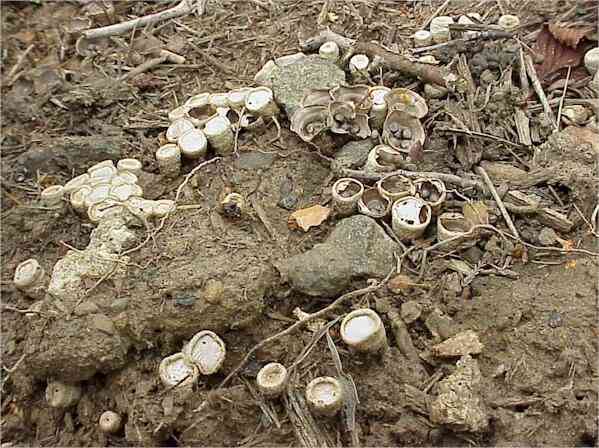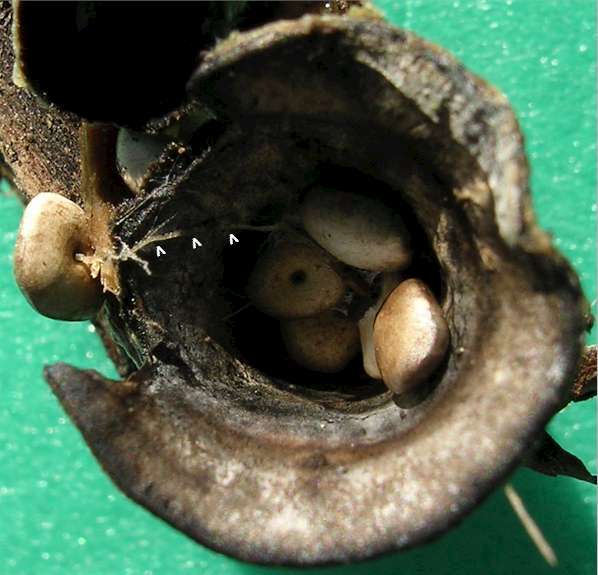..
CYATHUS spp. - THE BIRD'S NEST FUNGI There are several species of Cyathus (Basidiomycota), commonly known as the Bird's Nest Fungi. The species illustrated here is Cyathus striatus, which is probably the most common British species. This fungus produces small, funnel-shaped cups, about 1 cm diameter. The cups are initially covered by a thin membrane, but this ruptures as the fruitbody matures, revealing small clusters of disk-shaped, slate-coloured "eggs" called peridioles. These peridioles contain the basidiospores. The funnel-like shape of the fruitbodies enables the peridioles to be splash-dispersed by rain drops that fall into the cup, causing the peridioles to be thrown up to a metre distance. The peridioles have a very complex structure. They are attached to the wall of the splash-cup by a short stalk, within which there is a coiled funicular cord composed of hyphae. When the peridiole is splashed free from the fruitbody, this cord unwinds rapidly to a length of 5 cm or more, and it trails behind the peridiole. At the base of the cord is a tangled mass of adhesive hyphae, which serve to attach the peridiole to any nearby substrate.
Fig 1. Fruitbodies of Cyathus striatus in different stages of development. The mature bodies towards the top of the image contain several peridioles ("eggs"). [© Jim Deacon]
Fig
2. Close-up view of mature fruitbodies of C.
striatus containing peridioles. The immature
fruitbody marked in red is about 1 cm diameter.
Fig 3. Close-up view of a splash cup of Cyathus striatus, showing (arrowheads) the funicular cord of a peridiole. [© Jim Deacon] In his book "Introduction to Fungi", the eminent mycologist, John Webster records that fruitbodies of Cyathus olla can be found in autumn amongst cereal stubble, and C. stercoreus grows on old dung patches. However, C. striatus is now commonly found growing on decaying wood chips in many parks and gardens, owing to the use of wood chips as a mulching material applied to the soil surface. Large numbers of these small fruitbodies can often be seen on mulched soil from spring to early winter. |


